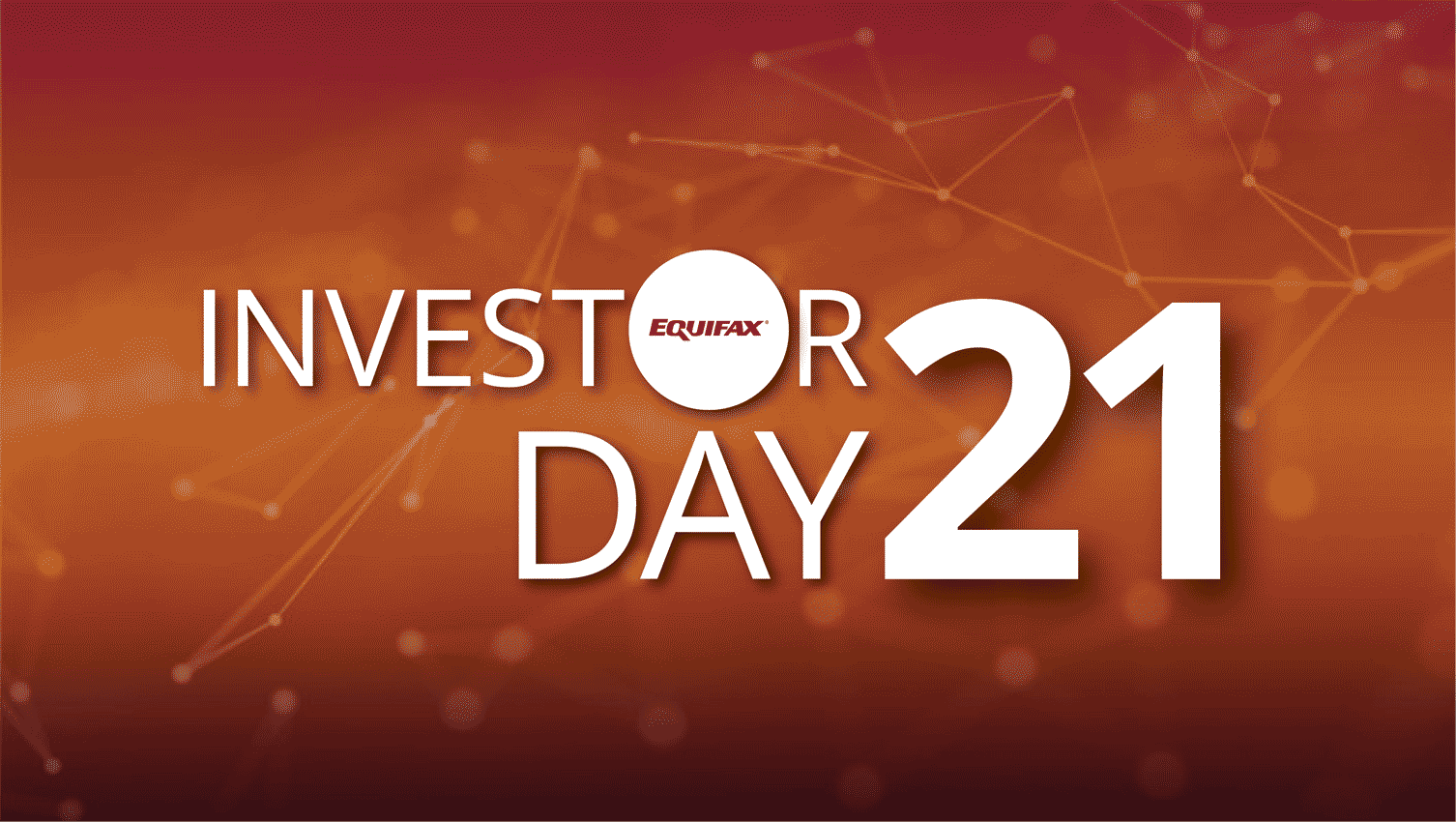Part II: Technology, Security Integral to ‘The New Equifax’
This article is second in a series
IN ITS FIRST INVESTOR DAY since 2012, Equifax senior leaders discussed how the company is executing on its EFX2023 Strategy, introduced the company's new Long Term Financial Framework and capital allocation plan, and detailed how the Equifax Cloud™ is driving record new product innovations and growth as it moves beyond its credit bureau roots.
A tech-driven company
 "Over the last 24 months, our average time to market has improved by 45%. Those are record rates for Equifax in both product volume and pace,” said Bryson Koehler, Equifax chief technology officer. “Not only is this approach fueling our existing product lines, but it’s extending our reach into new product lines we didn’t think were possible.”
"Over the last 24 months, our average time to market has improved by 45%. Those are record rates for Equifax in both product volume and pace,” said Bryson Koehler, Equifax chief technology officer. “Not only is this approach fueling our existing product lines, but it’s extending our reach into new product lines we didn’t think were possible.”
As Equifax plans for future growth, it will leverage the Equifax Cloud to power product innovation, with security as its bedrock. Equifax’s unified data fabric and keying and linking capabilities are paving the way to faster delivery of multi-data assets and even richer insights to drive better decisioning for customers一all with top-tier defensive features, detection and response.
Equifax’s efforts to combine capabilities, reduce duplication and remove legacy equipment is driving results, Koehler said. Equifax has created efficiencies by reducing four metric megatons of carbon emissions, reducing more than 1,200 duplicative products globally, and reducing the complexity of its infrastructure by 50%.
“Siloed data is a huge challenge in our industry,” Koehler said. “Equifax is now the only company in our space that has implemented a system to bring all of our enterprise data together一in every region, business unit and product line一with a common key for every person, place and thing that we catalog. This is truly game-changing in the data field, and it empowers our data scientists with more efficiency and intelligence to innovate our data models.”
Koehler added that the evolution of Equifax’s graph database capabilities on data fabric now allows the company to hone in on fraud patterns and anticipate them一with first tests showing fraud detection improvements of up to 15%. “We can now package up and deliver these enhancements in new ways一not just as standalone products but as a complete portfolio of capabilities to help customers manage, detect and prevent fraud.”
Leading in security
 With the rise of cyber attacks on companies, governments and individuals, mitigating threats has never been more important, and the stakes are higher than ever. That’s why Equifax made strategic investments to build an elite cybersecurity program.
With the rise of cyber attacks on companies, governments and individuals, mitigating threats has never been more important, and the stakes are higher than ever. That’s why Equifax made strategic investments to build an elite cybersecurity program.
“Today, Equifax is a leader in security,” said Jamil Farshchi, Equifax chief information security officer. “Our new cloud environment has given us real-time visibility into our cloud infrastructure, rock-solid defensive capabilities, and top-tier detection and response … all to a degree that’s never before been possible.
“We’re using our investments and expertise in security to help our customers become more cyber resilient,” Farshchi continued. “One example of this is Equifax CloudControl一a first-of-its kind capability that we’ve built. It gives our customers visibility into the security of the Equifax products that they leverage, which translates to greater transparency and defense of digital supply chains.”Invest
Equifax also .jpg) hired hundreds of highly-skilled cybersecurity professionals, many of whom work in a new $7.3 million Cyber Fusion Center. The facility allows Equifax to monitor its security environment 24/7 and respond to threats with speed and precision.
hired hundreds of highly-skilled cybersecurity professionals, many of whom work in a new $7.3 million Cyber Fusion Center. The facility allows Equifax to monitor its security environment 24/7 and respond to threats with speed and precision.
As a result of its security transformation, Equifax exceeds every major industry average on the Control Maturity Benchmark, as measured by an independent third party. At year-end 2020, Equifax’s security program outperformed the averages of 11 major industries including financial services, healthcare and government.
“We’ve spent the last four years really rebuilding Equifax,” said Equifax CEO Mark W. Begor. “We were strong in the past; we’re stronger today, and we’ll be even stronger in the future. We’re energized about the New Equifax, and I hope you are, too一because we’re just getting started.”
Forward-Looking Statements
This article contains certain forward-looking information, including information related to our long-term financial framework, to help you understand Equifax and its business environment. All statements that address operating performance and events or developments that we expect or anticipate will occur in the future, including statements relating to future operating plans and results, our financial and business strategy, improvements in our IT and data security infrastructure, expected financial and operational benefits, synergies and growth from our technology transformation and acquisitions, changes in U.S. and worldwide economic conditions, and similar statements about mortgage and financial markets, our outlook and our business plans are forward-looking statements. We believe these forward-looking statements are reasonable as and when made. However, forward-looking statements are subject to risks and uncertainties that could cause actual results to differ materially from our historical experience and our present expectations or projections. These risks and uncertainties include, but are not limited to, those described in our 2020 Form 10-K and subsequent filings with the U.S. Securities and Exchange Commission. As a result of such risks and uncertainties, we urge you not to place undue reliance on any forward-looking statements. Forward-looking statements speak only as of the date when made. We undertake no obligation to publicly update or revise any forward-looking statements, whether as a result of new information, future events or otherwise, except as required by law.
